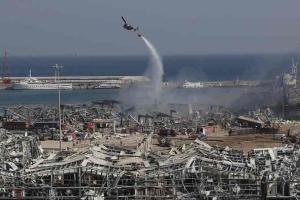
An army helicopter drops water at the scene of Tuesday's massive explosion that hit the seaport of Beirut, Lebanon. Picture/AP
Fireworks and ammonium nitrate appear to have been the fuel that ignited a massive explosion that rocked the Lebanese capital of Beirut, experts and videos of the blast suggest.
The scale of the damage " from the epicentre of the explosion at the port of Beirut to the windows blown out kilometres (miles) away ‘resembles other blasts involving the chemical compound commonly used as an agricultural fertilizer.
ADVERTISEMENT
But the compound itself typically doesn't detonate on its own and requires another ignition source. That likely came from a fire that engulfed what initially appeared to be fireworks that were stored at the port.
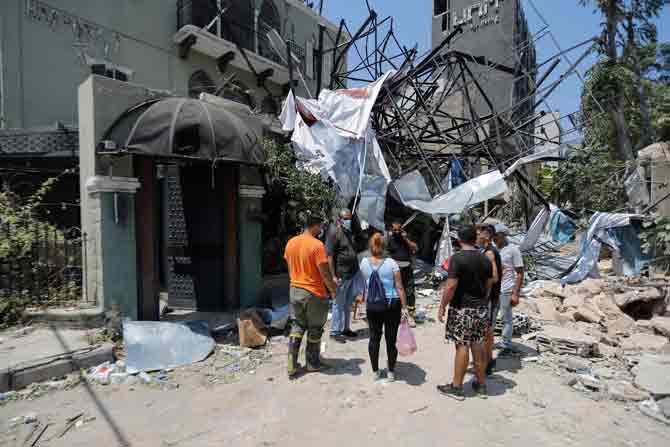 People inspect the damage in the aftermath of Tuesday's blast. Pictures/AFP
People inspect the damage in the aftermath of Tuesday's blast. Pictures/AFP
Online videos of the disaster's initial moments show sparks and lights inside the smoke rising from the blaze, just prior to the massive blast.
That likely indicates that fireworks were involved, said Boaz Hayoun, owner of the Tamar Group, an Israeli firm that works closely with the Israeli government on safety and certification issues involving explosives.
“Before the big explosion, you can see in the centre of the fire, you can see sparks, you can hear sounds like popcorn and you can hear whistles," Hayoun told The Associated Press.
"This is very specific behaviour of fireworks, the visuals, the sounds and the transformation from a slow burn to a massive explosion." Jeffrey Lewis, a missile expert at the Middlebury Institute of International Studies in Monterey, California, offered a similar assessment.
"It looks like an accident," Lewis told the AP.
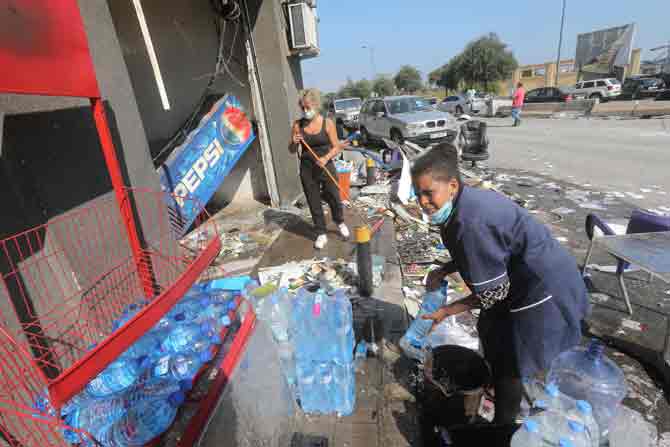 Women clear the damages outside a roadside kiosk in Beirut caused by the explosion.
Women clear the damages outside a roadside kiosk in Beirut caused by the explosion.
"First, there was a fire preceding the explosion, which is not an attack. And some of the videos show munitions what I could call popcorning, exploding like 'pop, pop, pop, pop.'" He added that "it's very common to see fires detonate explosives."
"If you have a fire raging next to something explosive, and you don't put it out, it blows up," he said.
The white cloud that accompanied the massive blast appeared to be a condensation cloud, often common in massive explosions in humid conditions that can follow the shock waves of an explosion, Lewis said.
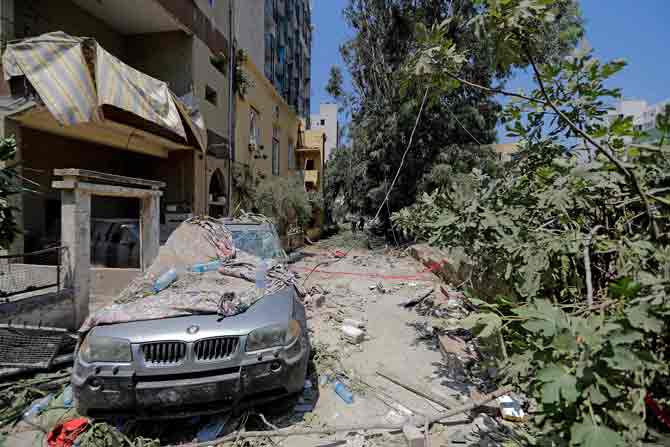 A picture shows the destruction caused by Tuesday's massive explosion in Beirut
A picture shows the destruction caused by Tuesday's massive explosion in Beirut
Orange clouds also followed the blast, likely from toxic nitrogen dioxide gas that's released after an explosion involving nitrates.
Experts typically determine the power of the blast by measuring the crater left behind, which appeared massive in aerial footage shot on Wednesday morning by the AP.
The Beirut blast, based on the crater and glass windows being blown out a distance away, exploded with the force equivalent to detonating at least 2.2 kilotons of TNT, said Sim Tack, an analyst and weapons expert at the Texas-based private intelligence firm Stratfor.
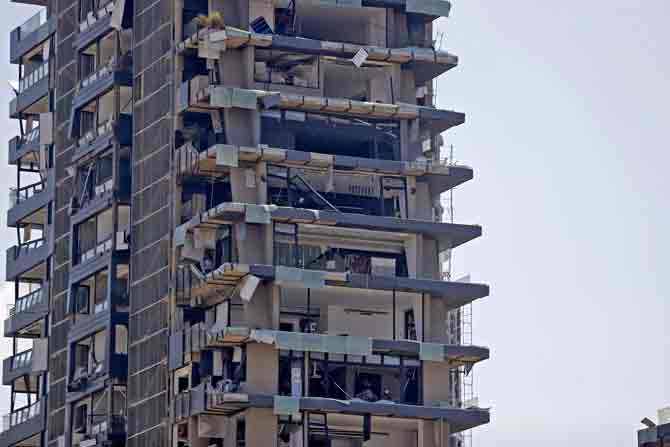 A picture shows destruction in the aftermath of a massive explosion in Beirut
A picture shows destruction in the aftermath of a massive explosion in Beirut
What initially started the fire at the port remains unclear. Beirut was sunny before Tuesday's explosion, with a daily high of 30 degrees Celsius (86 degrees Fahrenheit).
Lebanese Interior Minister Mohammed Fahmi, in comments to a local TV station, made no mention of ignited fireworks but said it appeared the blast was caused by the detonation of more than 2,700 tons of ammonium nitrate that had been stored in a warehouse at the dock ever since it was confiscated from a cargo ship in 2014.
Beirut Blast: Narendra Modi Expresses Shock Over Explosions
That amount could cause the explosive force seen in the blast Tuesday, Tack said.
Based on the timeline and the size of the cargo, that ship could be the MV Rhosus. The ship was initially seized in Beirut in 2013 when it entered the port due to technical problems, according to lawyers involved in the case. It came from the nation of Georgia, and had been bound for Mozambique.
Keep scrolling to read more news
Catch up on all the latest Crime, National, International and Hatke news here. Also download the new mid-day Android and iOS apps to get latest updates.
Mid-Day is now on Telegram. Click here to join our channel (@middayinfomedialtd) and stay updated with the latest news
This story has been sourced from a third party syndicated feed, agencies. Mid-day accepts no responsibility or liability for its dependability, trustworthiness, reliability and data of the text. Mid-day management/mid-day.com reserves the sole right to alter, delete or remove (without notice) the content in its absolute discretion for any reason whatsoever
 Subscribe today by clicking the link and stay updated with the latest news!" Click here!
Subscribe today by clicking the link and stay updated with the latest news!" Click here!







